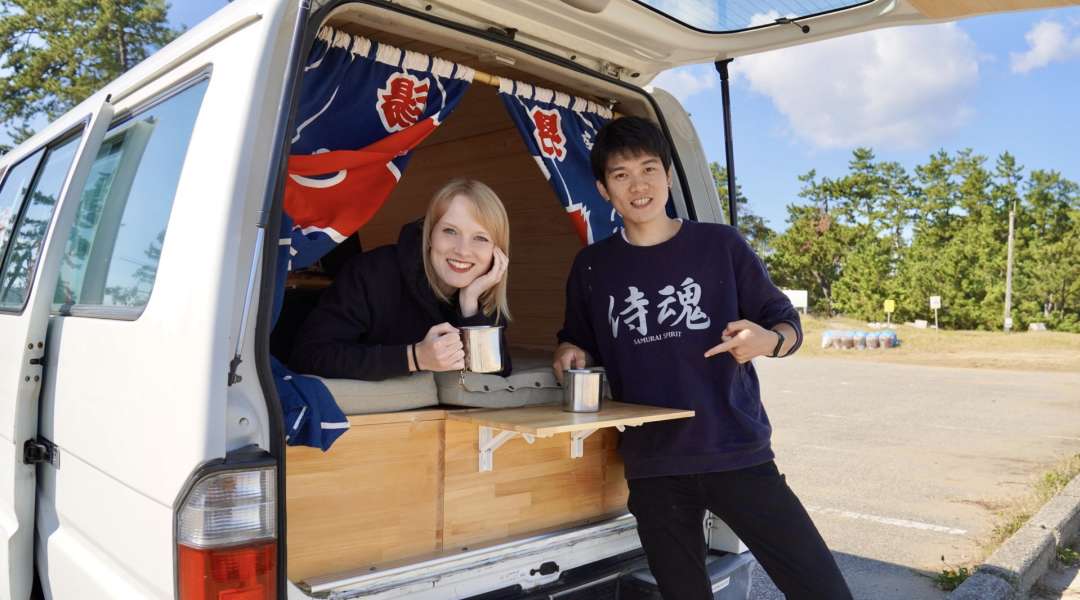
Kiwi and Bear, known as OshareJapan on social media, are a British-Japanese couple which did what many of us are secretly dreaming of - quit their day jobs and went on the road in a freshly converted campervan! We had a chat about how they got to where they are now, their campervan ups and downs, and some gems you should consider adding to your future itinerary.

Hi, thanks for talking to us today. Could you tell us a little about yourselves?
Hi! And thank you, we’re excited for the opportunity! We’re Kiwi and Bear, a British-Japanese couple travelling around and vlogging about Japanese food, culture, and travel from our self-converted van. We’ve been on the road for just shy of half a year with the goal of sharing “day in the life” style videos that offer a unique view of Japan from our trusty van, by bike, on foot, and from an international perspective with anyone willing to watch!
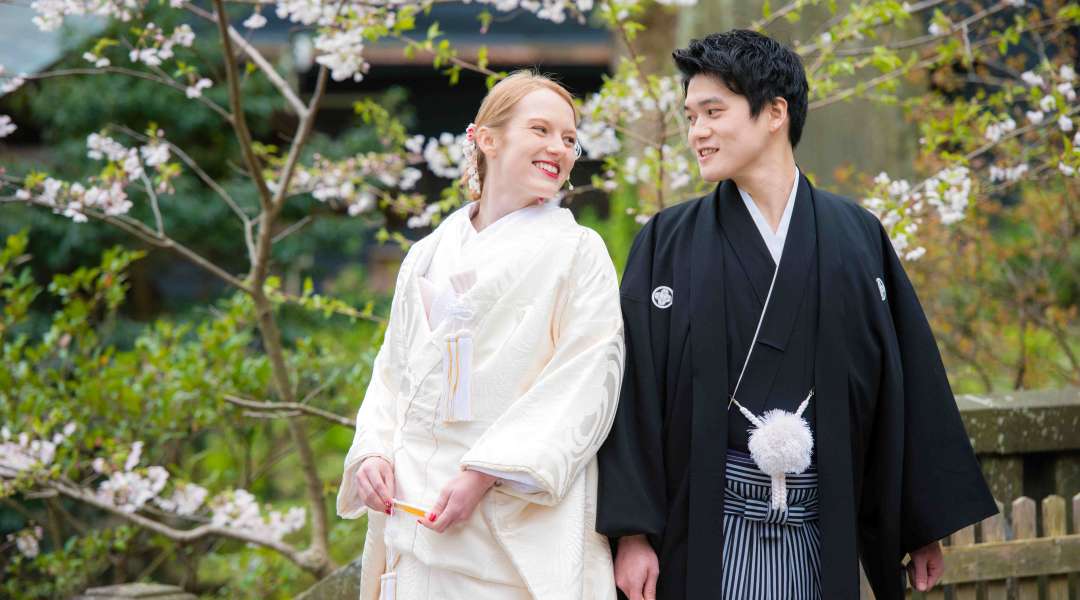
ceremony (Photo credits: 和婚スタイル浅草店
What’s the story behind your social media handle: ‘OshareJapan’?
おしゃれ (“o-sha-rey”) is a Japanese word meaning trendy, stylish, or cool. It can be used to describe anything from a hipster café to your coworker’s fancy new suit, and through our content, we want to promote what we consider “oshare” Japan beyond all the vending machines and arcades. What started as a bit of an ironic name - neither of us consider ourselves to be trendy by any stretch of the imagination - has grown into something very representative of what we want to achieve through our travels. I think people sometimes read it as “Oh, share Japan”, but I guess the meanings are kind of one and the same!
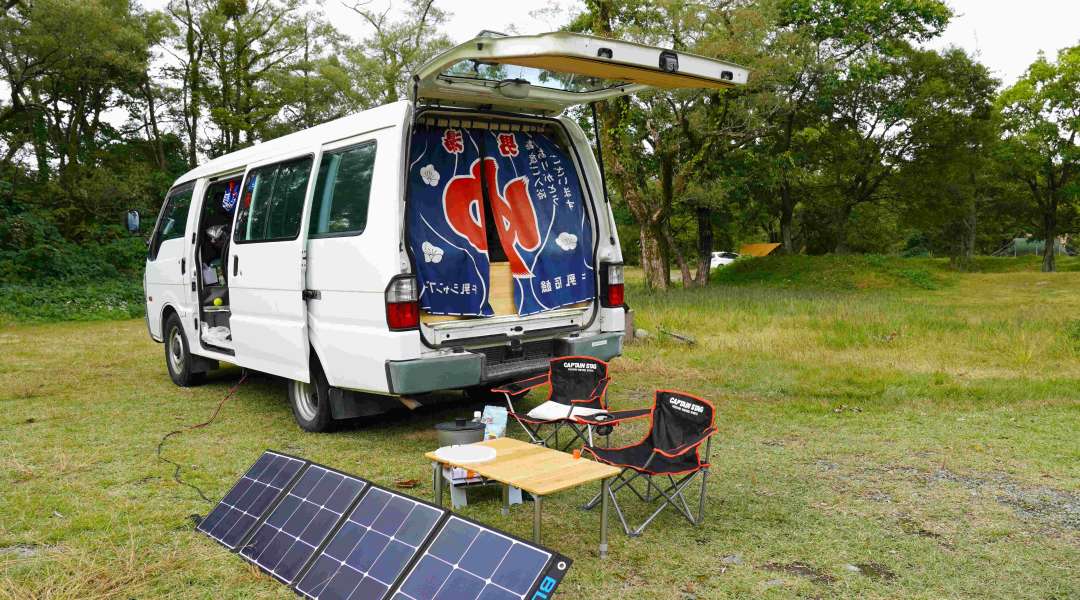
What were the beginnings of your campervan travels? How did you become digital nomads?
It all happened so fast! Up until summer last year, I (Kiwi) couldn’t even drive! I’d taken lessons years ago, but never booked myself in for the test and spent almost all my adult life stubbornly sticking to public transport. It wasn’t really until we started filming more remote places that I even considered picking it up again and, ironically, part of the reason all the car DIY started was because we couldn’t take it in turns driving.

In summer 2020, we invested in a second hand Nissan Note and built our first car-camping device - a glorified wooden crate on retractable legs - to fully stretch out when sleeping. From there, the idea of life on the road became more of a reality, but we knew we'd need something bigger to see more of Japan. A full-sized campervan was well beyond our budget, and we found companies that rented out pre-converted camping cars, but by that point we’d caught the building bug and we wanted a van to call our own, so we started saving again.
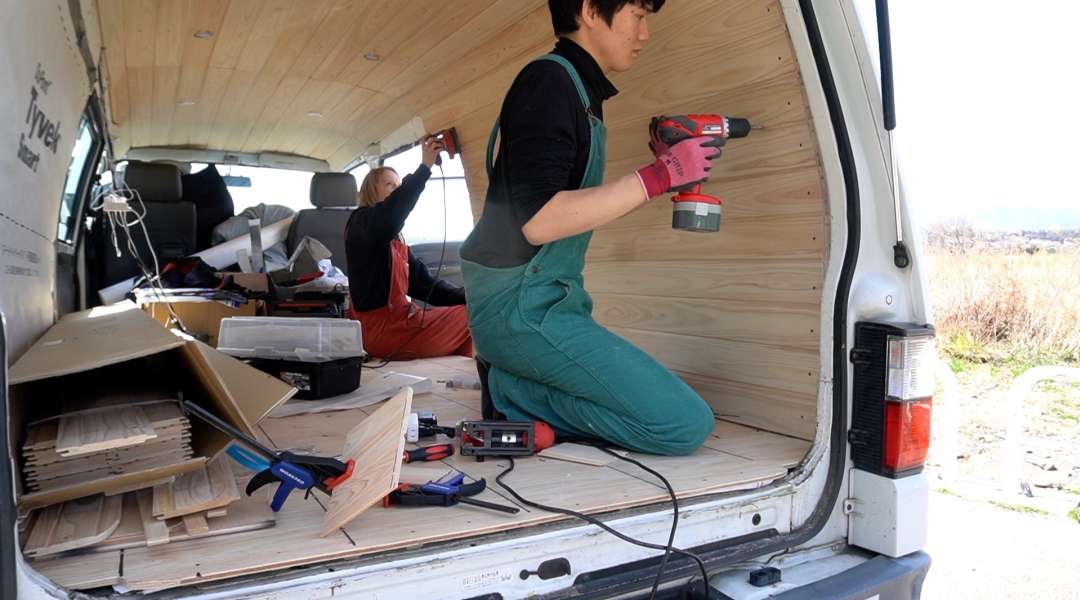
For a while Bear’s phone lock screen was a picture of a campervan and he would constantly scour second hand car websites for deals, and I guess his powers of manifestation worked because by January, we signed a deal for an old van in need of some TLC. Our apartment became a toolshed, I started driving lessons, and we spent 4 months putting our seal on the van before things got too sweaty in summer. We then did that thing you’re not supposed to and quit our day jobs with the agreement that we would put all of our efforts into our channel and promoting Japan while we have the savings to do so. We’ve sort of put all our eggs in one basket with travelling, filming, and editing without an agency, so I don’t think we can fully call ourselves digital nomads yet, but with the help of our little YouTube community, our nomadic dream is becoming more sustainable and we want to keep travelling for as long as we can!

Do you have any advice for people who want to explore Japan in a campervan?
It might sound obvious, but our first tip would be to confirm where you’re going to stay. Especially now, some campsites are closed or not accepting visitors from other prefectures, and the last thing you want is to navigate teeny mountain roads in a campervan at night if you get turned away. We've learnt the hard way that Google Maps will find a way to send you on that white knuckle ride when you need it least!
It also goes without saying, but wherever you park, make sure it’s legal! Two great options for single night use are roadside stations (道の駅, “michi no eki”) and expressway parking areas. Roadside stations are a godsend as they’re free, have toilet and food access, and sometimes even have a place to top up water. In general, Japan has fantastic resources for campers, and there are also plenty of free auto-campsites, toilets, and cheap onsens, but if you plan on travelling long-term without using RV parks and paid campsites, you’ll want to know where you can fill up your water tank. There are spring water (湧水, “wakimizu”) maps online, but some springs can be a bit questionable, so use your better judgment and check for water quality inspection results (湧水の水質検査, “wakimizu no suishitsu kensa”) online too. While we don’t recommend drinking water that hasn’t been treated, with a bit of careful research, filtering, and boiling it can at least be used for washing!

What locations which are less accessible by public transport could you recommend to our readers?
One of the things that makes Japan such a great tourist destination is that so many places are accessible by public transport, but visiting some of our bucket list spots just wouldn’t be possible, or at least not the same, without the van. One of the more unique places that can only fully be enjoyed by car is Chirihama Beach Driveway in the Noto Peninsula. It’s a long stretch of beach that you can drive up and down for free, and it’s the only place you can do it in Japan. We did see some tour buses and a taxi when we visited, but if you really want to feel your heart race while avoiding sinking into the sand, you really have to be behind the wheel! The local community also come together once a year to create huge sand sculptures that make a great alternative for anyone unprepared for the cold of Sapporo’s snow and ice sculpture festival.

If you’re heading to Chirihama from Tokyo, the Hakusan Shirakawa-go White Road is another breathtaking drive along the way that many people miss when visiting the Shirakawa-go thatched houses. It’s only open for part of the year, but it's definitely worth the drive to see the autumn leaves. Oh, and if you are planning a trip to Noto, go check out the giant squid sculpture, too!

squid statue in Noto
Every March we try to focus more on the beautiful area of Tohoku; What do you like about this area of Japan? Do you have any favourite locations?
Tohoku is one of our favourite regions! Unfortunately it’s not often the first place people think to visit, so it feels like there’s a lot of the area that is unknown to tourists, which is why we spent our 2020 “Vlogmas” showcasing Aizuwakamatsu and the surrounding areas in Fukushima. One of the things that drew us to the Aizu area was its samurai history and the unique architecture of Sazaedo temple, but there's something about the nature and warmth of the people there that made us feel at home. We can’t wait to travel north and discover more of the region, but to anyone conversely missing a taste of international travel, you cannot beat a trip to the nearby British Hills for some of their scones and coronation chicken sandwiches!
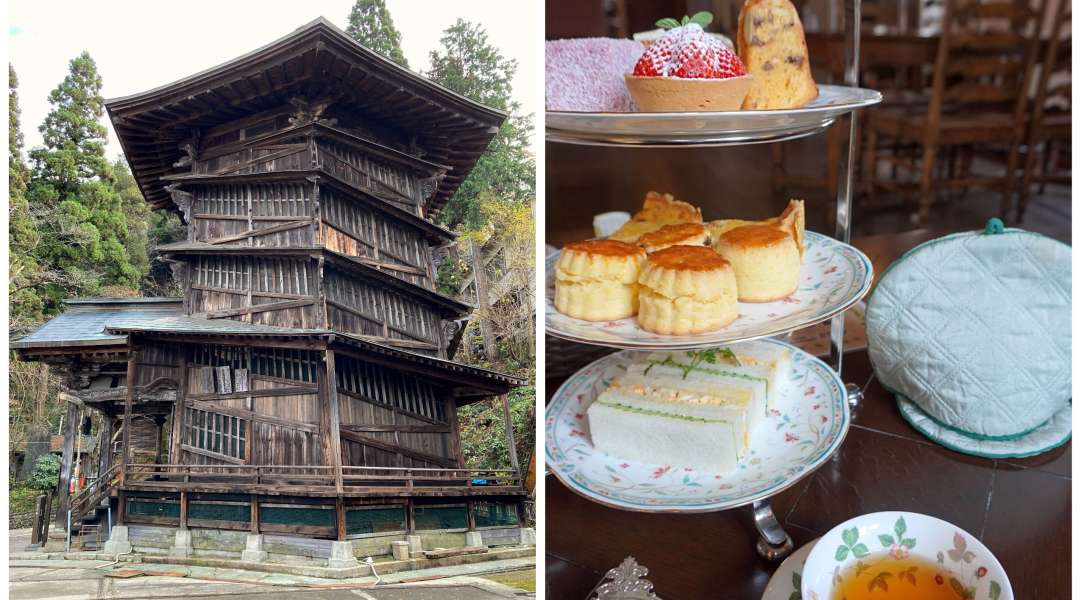
Thank you!
You can follow Kiwi and Bear's adventures on Instagram, Twitter, Facebook, and YouTube!


























































